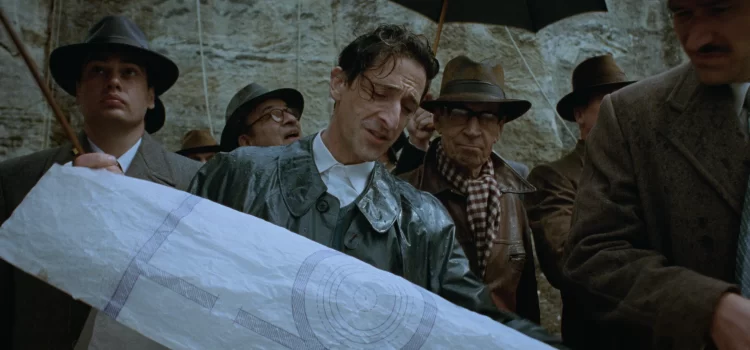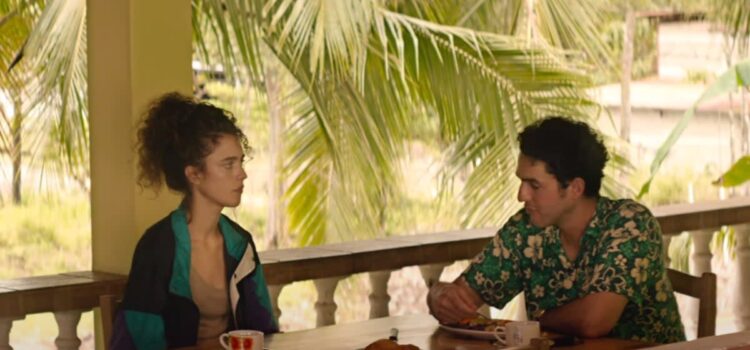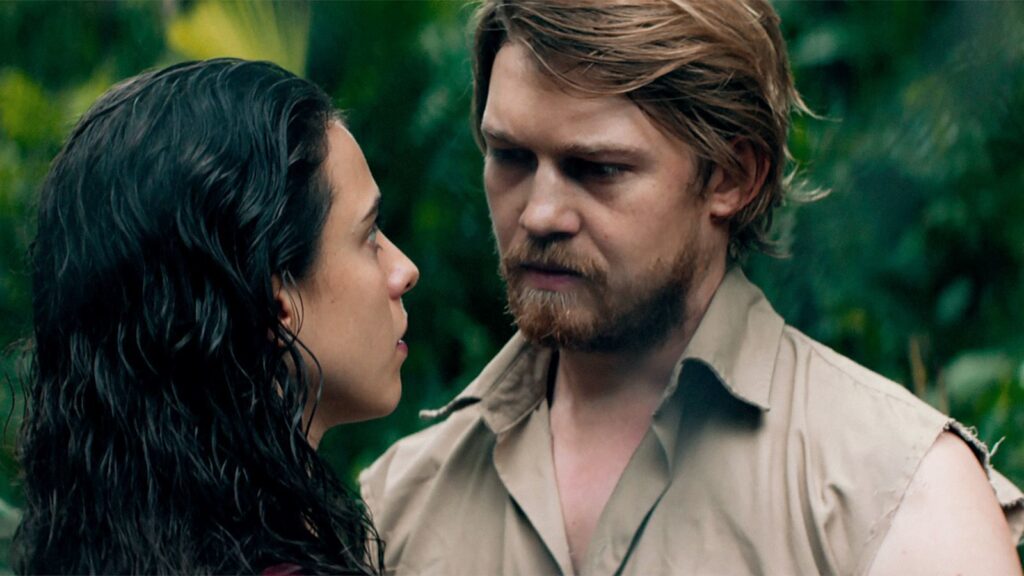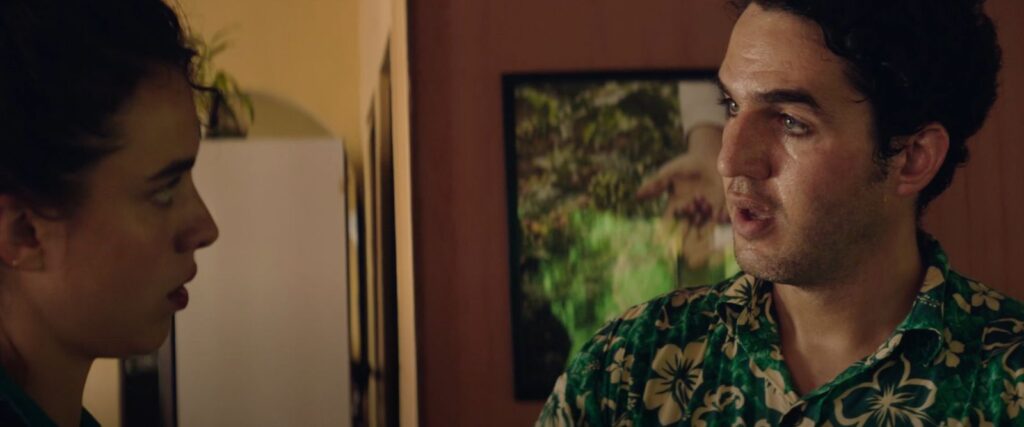By Lynn Venhaus
A massive and ambitious drama, “The Brutalist” swings for the fences with big, bold visuals from a mid-century architect and an unwieldy dark narrative about struggles between art and commerce that spans 33 years over a 3 hour, 35-minute runtime.
To view it in one setting is a commitment, although theaters have a 15-minute intermission built in, showing the 215-minute film in two divided parts. It’s shot in Vista Vision, the first film using that process in many years.
While the film is technically brilliant, with stunning production design by Judy Becker and impressive stark cinematography by Lol Crawley to convey a giant scope of artistic vision and architectural grandeur, the script co-written by director Brady Corbet and his wife, Mona Fastvold, is a rocky road populated with thorny, complex characters.
This immigrant tale about László Tóth, a Jewish architect who crosses the Atlantic by boat from Hungary after World War II in 1947, gives the Oscar-winning actor Adrien Brody a meaty role that he can dig into, exploring various facets. This is not a biography, although it seems as if this character is based on a real person.
Once in Pennsylvania, he struggles to find comparable work to what he did so well before, and his wife Erzsébet (Felicity Jones) comes later, also a Holocaust survivor. Their backstory is bare minimum, and their family dynamic is odd. They appear independent at times, others as dependent and intertwined.

After being commissioned to build a library for his elitist father by his pompous son, Toth encounters a wealthy industrialist, Harrison Lee Van Buren Sr. (Guy Pearce), who is a cold and callous businessman.
But Van Buren has sense enough to realize Toth’s talent. To strive for the American Dream, they need each other to accomplish their goals, and an uneasy partnership – of sorts – begins as Toth is hired by Van Buren for a structure in his mother’s honor, envisioning a modernist community center that will establish their legacy.
Neither man likes to compromise, and they each dream big, but Van Buren is a bully and has an off-putting way of humiliating Toth. The architect is also difficult to corral, stubborn in irritating ways, and it seems, teeters on going mad at times.
And then there is a doozy plot development that changes everything (and won’t be spoiled here). And a flat ending that seems tacked on after the film could have ended.
Neither of these deeply flawed, ethically challenged guys is all that likable, and the film has a weird chilliness and sterility to it. But it’s obvious both actors are giving their best efforts molding these distinctive men.

For clarity, brutalism is a style of architecture popular from the 1950s to the 1980s known for exposed concrete and brick that was designed with geometric, angular shapes and blocky forms. You’ve seen government buildings, parking garages and high-rises made in this style, and to me, ugly metropolitan slabs that are not visually appealing nor memorable.
Corbet, in his third feature after 2018’s “Vox Lux,” has a certain style, and those enamored by visionary auteurs will be enthralled. This film is a grand effort in establishing his singular vision. Yes, it’s artsy, but it’s also indulgent, and I feel parts are disjointed and often try too hard.
Corbet keeps viewers on their toes and when you think he’s headed in one direction, he veers a different way. Some of the most outrageous plot points don’t exactly fit a tidy narrative, and it spirals into several tangents that become increasingly head-scratching.
The strong supporting cast features two of Corbet’s actresses from Vox Lux, Raffey Cassidy as Toth’s niece Zsofia and Stacy Martin as Van Buren’s daughter Maggie Lee, as well as Joe Alwyn as her entitled creepy twin brother Harry Lee, and Isaach De Bankole as Toth’s friend Gordon, often a voice of reason.
Because of its audacious sweeping saga, punctuated by Daniel Blumberg’s haunting music score, few movies compare to “The Brutalist.” An awards magnet, it won the Silver Lion at the Venice Film Festival, and recently, a Golden Globe for motion picture – drama, as well as many critics’ groups’ love.

Yet, upon reflection, it’s more showy style than substance, and lacks connection. Not sure what it’s trying to say, but it’s not easy to embrace, except for what it is – an aspirational work of art that is one of those films more admired than widely accepted.
“The Brutalist” is a 2024 drama directed by Brady Corbet and starring Adrien Brody, Guy Pearce, Felicity Jones. Joe Alwyn, Raffey Cassidy, Stacy Martin, Isaach De Bankole and Alessandro Novolo. It is rated R for strong sexual content, graphic nudity, rape, drug use and some language, and its runtime is 3 hours, 35 minutes. It opened in local theatres Jan. 10. Lynn’s Grade: B.


Lynn (Zipfel) Venhaus has had a continuous byline in St. Louis metro region publications since 1978. She writes features and news for Belleville News-Democrat and contributes to St. Louis magazine and other publications.
She is a Rotten Tomatoes-approved film critic, currently reviews films for Webster-Kirkwood Times and KTRS Radio, covers entertainment for PopLifeSTL.com and co-hosts podcast PopLifeSTL.com…Presents.
She is a member of Critics Choice Association, where she serves on the women’s and marketing committees; Alliance of Women Film Journalists; and on the board of the St. Louis Film Critics Association. She is a founding and board member of the St. Louis Theater Circle.
She is retired from teaching journalism/media as an adjunct college instructor.




